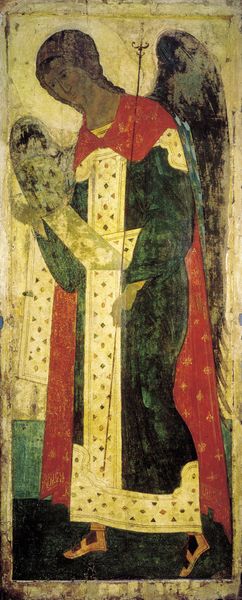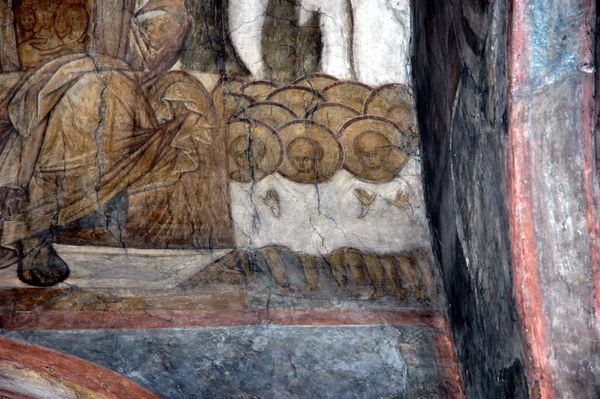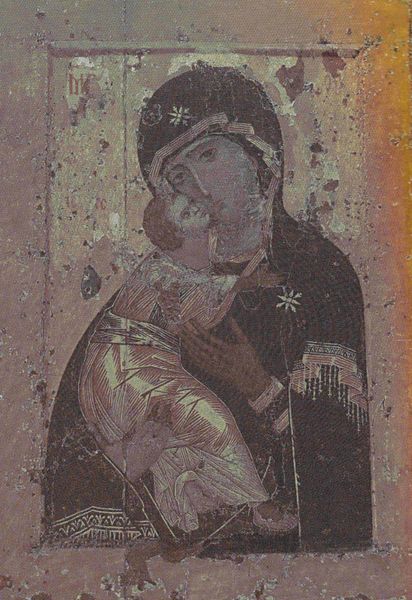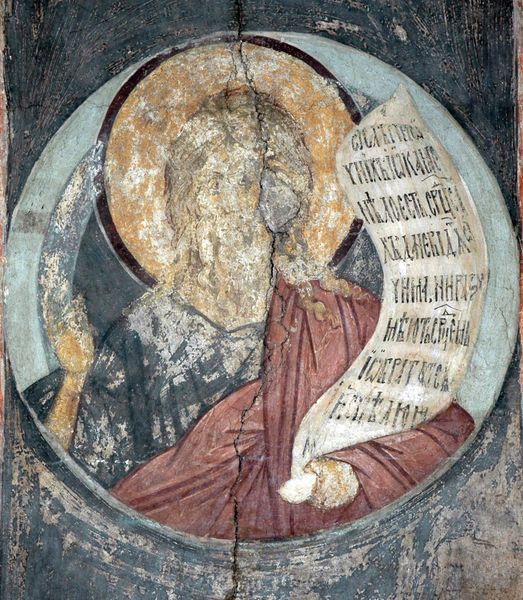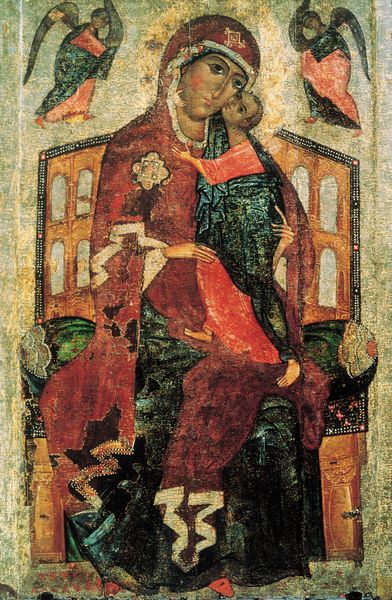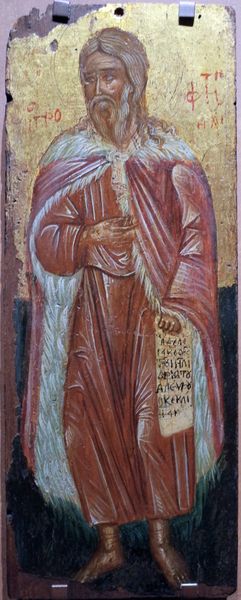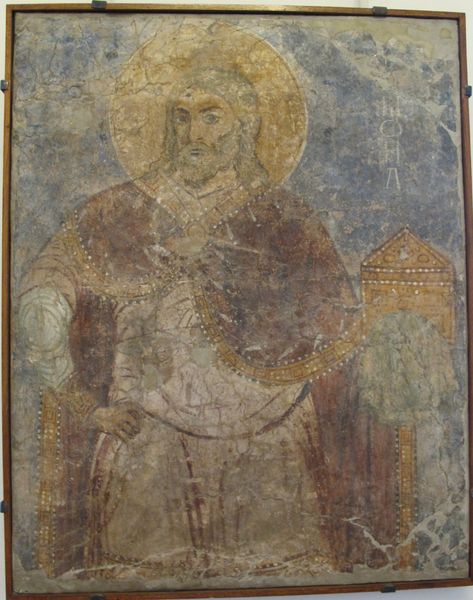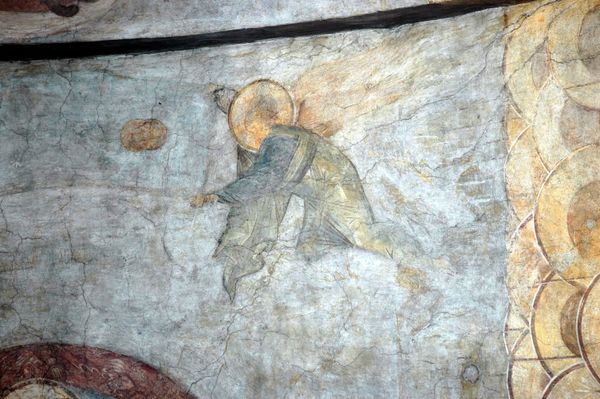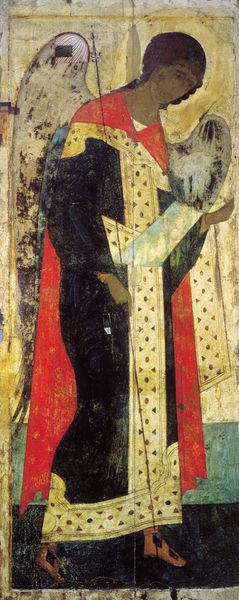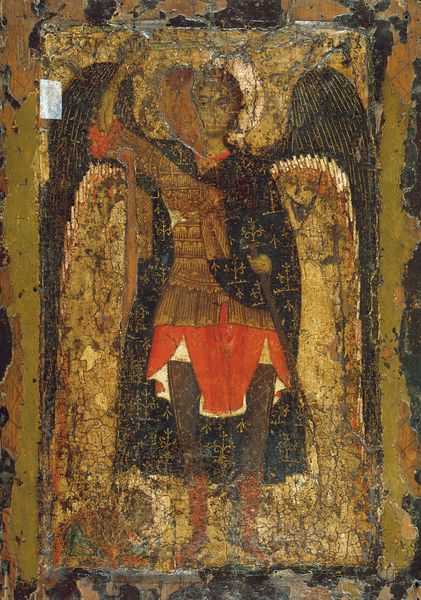
The Last Judgement: Faces of righteous men 1408
0:00
0:00
andreirublev
Assumption Cathedral, Vladimir, Russia
tempera, painting, fresco
#
portrait
#
byzantine-art
#
medieval
#
tempera
#
painting
#
figuration
#
fresco
#
christianity
#
men
#
line
#
history-painting
#
christ
Copyright: Public domain
Editor: Here we have a section from Andrei Rublev's fresco, "The Last Judgement: Faces of righteous men," created around 1408 for the Assumption Cathedral in Vladimir, Russia. It's tempera on the wall, and I must say, it has a striking sense of solemnity. What do you see in this piece, beyond just the figures? Curator: What resonates with me is the continuity of spiritual aspiration expressed through very specific visual languages. Notice the patterning on the clothing—the geometric designs interwoven with crosses. These aren't arbitrary. They function as visual talismans, continuously reinforcing faith. They speak to a deep-seated need for order and protection against chaos. Do you think the artist considered the impact of symbols like that? Editor: That's fascinating. I guess I always saw it as just decorative. But thinking about it as a kind of visual mantra… it changes the way I perceive their robes, the entire image even. Is that linked to the Byzantine style at all? Curator: Absolutely. Byzantine art relies heavily on symbolic communication. The flatness of the figures, the intense gazes, and even the weathering we see here contribute to a sense of timelessness and unwavering belief. Think about how these images would have served to reassure believers throughout history. Are we meant to see individual likenesses, or are these figures standing in for something larger? Editor: Hmm, larger, definitely. Archetypes maybe? Figures embodying universal faith in the face of Judgment. I'm struck by how immediate and accessible that feels, despite the distance of centuries and cultural differences. Curator: Indeed, and this underscores the profound psychological weight imagery carries. It’s about collective memory, the endurance of certain hopes and fears expressed through form and color, across time. It really makes you wonder about how such enduring traditions shape and reinforce belief. Editor: I had not thought about imagery holding a certain psychology of cultural memory. Now I’m beginning to wonder about how the same types of figures exist in Western traditions, too, such as the figures depicted in paintings of Saints throughout Europe and in manuscript illumination. This piece certainly gives me a lot to consider.
Comments
No comments
Be the first to comment and join the conversation on the ultimate creative platform.
